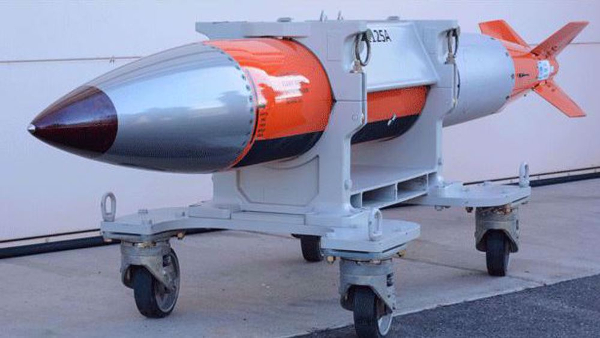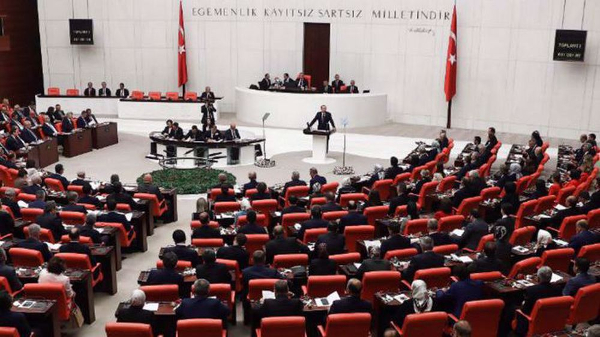During the nearly four decades of life of their bloc, the Arab states of the (Persian) Gulf Cooperation Council (PGCC) have failed to attain their ideal of political consistency and strategic unity just like their pattern the European Union.
Such a failure to achieve goal is apparently observable as the members' strategic interests conflict and their political spats show face every now and then. Their struggle for seizing leadership of the bloc remains standing and their national economies, which are supposed to be interwoven as a key feature of an economic union, remain parted.
In the past few years, the deepest political gap of the six-nation Arab bloc was caused by differences between Saudi Arabia and Qatar. It overshadowed the Arab council's all-out potentials, including its political clout in the regional equations. The division, additionally, has led to a polarized PGCC, with some member states such as Bahrain and the UAE fully supporting Riyadh’s approach and others like Oman and Kuwait standing by Qatar that comes against the unilateral and overbearing policy of Saudi Arabia.
In past few days, the tensions set for new escalation as on Monday morning Saudi Arabia, Bahrain, and the UAE, along with other countries out of the bloc, severed diplomatic ties with Doha by recalling ambassadors and expelling Qatar's, and also suspend air, sea and land transport with Qatar.
The fresh diplomatic spat called attention of the political analysts, pushing them to think that Doha is now on the course to wholly separate ways from Riyadh.
What are the drives of the new crisis inside the PGCC?
Doha–Riyadh ideological conflict
Although Saudi Arabia and Qatar are Sunni states they have different approaches to the sect. In fact, each one of them wants to apply and instill across the Muslim and Arab nations its own interpretation of the Islamic branch. The Saudi leadership propagates the Wahhabi ideology, which develops a narrow-viewed version of the Islamic life style. For example, it separates men and women in public places and also implements strict sharia law, allowing tough judicial rulings. It furthermore, does not recognize real rights for other sects of Islam. On the opposite side, Qatar stands and supports the Muslim Brotherhood that spreads almost across the Arab world, has a broader view of the religion, seeks more presence for the women on the public stage, and shows more respect for the other sects of Islam like Shiite.
Therefore, seeing the Muslim Brotherhood ideology as being more attractive to the public than the restrictive Wahhabi ideology for its being more compliant with the democratic principles and social freedoms, the Saudi Arabian rulers consider the ideology threatening to its interests. At the present time, Qatar is a key patron of the Muslim Brotherhood across the region. Doha provides financial and media support for the group in Saudi Arabia and other Arab countries, giving rise to one of the major triggers of the recent escalated crisis between Riyadh and Doha.
Qatar-Saudi Arabia territorial disputes
The rifts over territories between the two members of the Arab council have a historical record. In 1992 Doha and Riyadh engaged in armed border clashes. As a result of the October 1 frontier battle, one soldier from Saudi Arabia and two from Qatar were killed. The kingdom claimed ownership of 23 miles of the Qatari southeastern coasts. The two neighbors temporarily reached a deal in 1992 to refer to a December 1965 border agreement for de-escalation.
Another dispute point is Khafus border region. Doha and Riyadh have failed to settle the case since 1965. Khafus region lies close to a road that ends in an air base built by Saudi Arabia in Khawr al Udayd. Khawr al Udayd is a bay located south of Qatar but is possessed by Saudi Arabia. The area is crucial for the Qataris since it links them to the UAE, their largest trade partner. Riyadh’s seizure of the area makes all of the Qatari land roads lead to the Saudi territory, which means Qatar needs to pass through Saudi lands to access the UAE. Qatar is also questioning validity of a UAE-Saudi Arabia accord for delimitation of borders in Khawr al Udayd region signed in 1974.
Relations with Iran
Another issue standing as a polarizing factor inside the body of the (Persian) Gulf Cooperation Council is the failure by the member states to adopt a unanimous approach towards Iran. Saudi Arabia– spearheading a camp against growing Iranian influence in the region– seeks to sever relations between the PGCC and Tehran and has recently stepped up efforts to build an anti-Iranian alliance of the Muslim countries. The recent Riyadh summit that participated by the US President Donald Trump echoed the Saudi anti-Tehran measures. But Qatar, a country that tries to adopt an independent policy expand its influence on the regional and global stage, has taken a friendly stance towards Iran. This approach became more apparent particularly after the current emir of Qatar Sheikh Taming bin Hamad Al Thani assumed power from his father Sheikh Hamad bin Khalifa Al Thani in 2013.
The openness towards Iran aims on the one hand at serving Qatar's political and economic interests and on the other hand at putting strains on Saudi Arabia, an archival of Tehran in the region. This comes while Riyadh focuses on prohibiting Qatar's rise as a strong regional state politically and economically that can pose challenges to the Saudi ideal of leadership of the Muslim world.
Differences over regional cases
Conflicting regional policies are among the crisis-making factors in Qatar-Saudi Arabia relations. The rivalry, particularly after the 2011 Arab uprisings, surged between the two sides who want to secure new areas of influence regionally. The major rivalry between the two Arab states has been over hot regional cases like Yemen, Syria, Bahrain, and Egypt.
When Mohamed Morsi, a political figure from the Muslim Brotherhood, was elected as the president of the post-revolution Egypt, Qatar granted Cairo $2 billion in cash aid. On the opposite side, Saudi Arabia gave $11 billion to the Egyptian military to remove the first democratically-elected president of Egypt. Al Saud defeated Al Khalifa in this game el-SISI ousted Morsi in 2013after a deadly military coup.
Riyadh and Qatar have been competing in Syria, too. Although the two oil-rich Persian Gulf states mobilized their potentials to remove from power the Syrian President Basher al-Assad since 2011, they have been struggling to introduce their own allied group as the leader of the anti-Assad opposition camp. The Saudi pressures removed Moaz al-Khatib, the Qatari-backed president of the National Coalition for Syrian Revolutionary and Opposition Forces, and replaced him with Ahmad Jarba.
For conclusion, it can be noted that despite all efforts to show off unity, the Arab council’s members remain divided in their bilateral and multilateral ties. The divisions sometimes even lead to efforts to destabilize the opposite side and even seek regime change.
LINK: https://www.ansarpress.com/english/6938
TAGS:































 online news tv
online news tv




